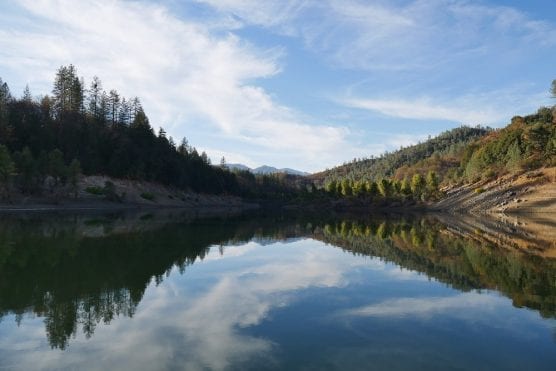WINTERS, Calif. — Building on efforts to curb the effects of climate change amid a historically severe wildfire season, California Governor Gavin Newsom set a new goal Wednesday to conserve 30% of the state’s land and coastal water by 2030.
“It’s about recognizing that climate change is not just about greenhouse gas emissions emanating from tailpipes of vehicles, but it’s the opportunity to sequester in our soils these greenhouse emissions, the carbon rather, in our soils,” Newsom said during a press conference at Sierra Orchards in Solano County.
California will be the first state in the nation to join 38 countries in a global effort supported by the United Nations to protect 30% of the planet’s natural spaces by 2030.
“California as the fifth largest economy in the world needs to flex its muscles, needs to assert itself and advance that cause, not only as it relates to its global impacts but hopefully jumpstart similar efforts in other states,” Newsom said.
Newsom signed an executive order directing the state’s Natural Resources Agency to draw up a plan by Feb. 1, 2022, to achieve the goal in a way that protects the state’s economy and agriculture industry, while also expanding and restoring biodiversity — the vast variety of animals and plants — that live in areas as varied as San Francisco Bay Area tidepools to arid deserts of Southern California to mountain forests of the Sierra.
“We’re here to advance the collective cause of bringing people together across their differences to advance a different kind of mindset in terms of sustainability,” Newsom said.
Considered one of the world’s 36 “biodiversity hotspots,” California has a large concentration of unique species that also face serious survival threats. Of the estimated 5,500 plant species found in California, 40 percent are “endemic,” or found nowhere else on Earth.
California also has a $50 billion agriculture industry that produces over a third of the nation’s vegetables and two-thirds of its fruits and nuts.
Newsom directed state agencies to pursue actions and partnerships to “maximize the full climate benefits” of natural spaces and working lands, such as farms and ranches.
The directive aims to encourage the use of “healthy soil management practices,” such as planting cover crops and hedgerows, and composting. It also seeks to expand wetlands restoration, create more urban parks and increase forest management projects to reduce wildfire risk.
Noting that California experienced the hottest August on record and one of the highest temperatures in recorded history — 130 degrees — in Death Valley that month, Newsom said it has become obvious to people living on the West Coast that climate change is real.
“It’s pretty self-evident to anybody who lives on the West Coast of the United States that the hots are getting a lot hotter. The dries are getting a lot dryer,” Newsom said.
“If you don’t believe in science, you’ve got to believe your own eyes,” the governor added.
The “30 by 30” global conservation campaign is supported by the International Chamber of Commerce, which wrote a letter in June calling on CEOs to push governments to adopt policies to reverse nature loss as part of their plans to combat climate change.
The World Economic Forum calculated that $44 trillion in economic value — over half the world’s total GDP — is potentially at risk as a result of climate change.
The executive order establishing a new conservation goal for the state follows Newsom’s blockbuster announcement last month that California will ban the sale of gas and diesel-powered vehicles by 2035.
Shaye Wolf, climate scientist at the Center for Biological Diversity, applauded Newsom’s announcement and said he hopes other states will follow California’s lead. But he also warned that conserving and restoring green spaces alone will not solve the world’s climate crisis.
“We know that burning the fossil fuels in the ground will heat the planet well beyond 1.5 degrees Celsius and push many animals and plants towards extinction,” Wolf said in a statement Wednesday. “Failing to limit warming to 1.5 degrees means losing the world’s coral reefs. In California, we risk losing the iconic Joshua tree of the Mojave desert, coastal shorebirds like the snowy plover that get crowded out by rising seas, and alpine species like pikas that can’t survive on warming mountain tops. Protecting our beautiful range of lifeforms on land, in the air and at sea requires also keeping fossil fuels in the ground.”
— By Nicholas Iovino, CNS
Like this:
Like Loading...
Related





 Tweet This
Tweet This Facebook
Facebook Digg This
Digg This Bookmark
Bookmark Stumble
Stumble RSS
RSS


























REAL NAMES ONLY: All posters must use their real individual or business name. This applies equally to Twitter account holders who use a nickname.
0 Comments
You can be the first one to leave a comment.